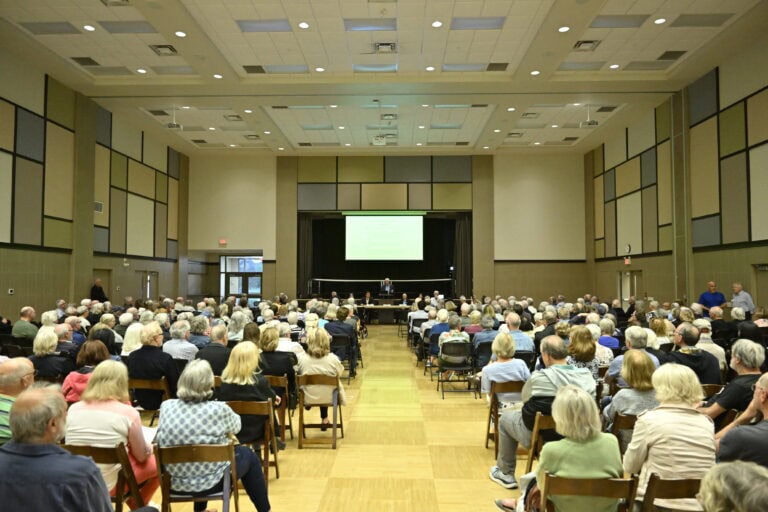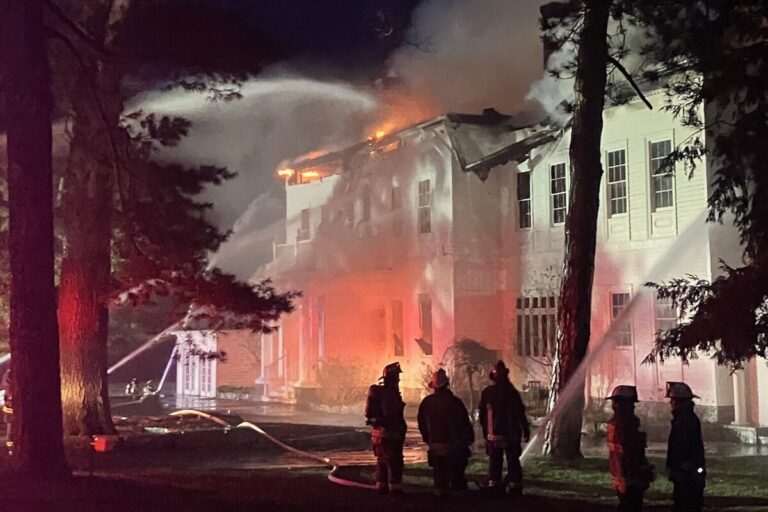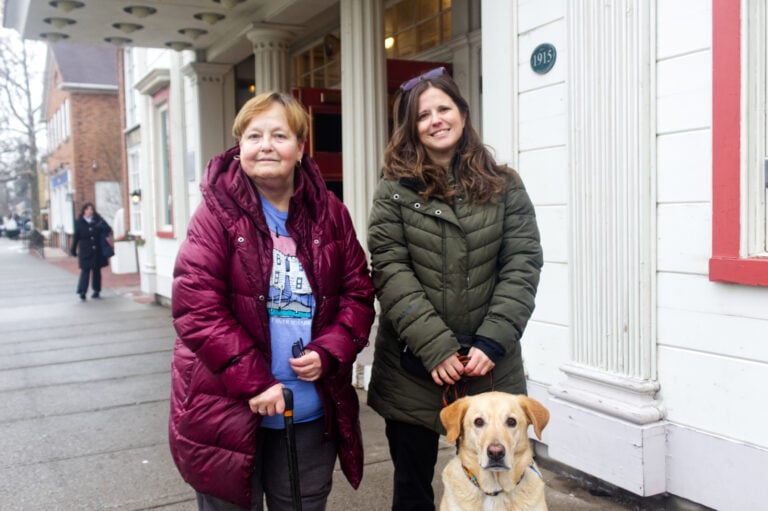Coyotes have long been part of Niagara-on-the-Lake’s landscape, but recent sightings have some residents on edge, saying the animals are venturing too close for comfort.
Wandering through gardens, stalking pets, and lingering in tourist areas, coyotes are leaving some too afraid to walk their dogs or let pets outside.
But the Humane Society of Greater Niagara says more sightings don’t necessarily mean there are more coyotes — and the Ministry of Natural Resources says it hasn’t received any recent reports from the area. The town says it has received one service request related to coyotes and directs all complaints to the humane society.
Cortnie Welychka, senior manager of operations at the humane society, said the rise in sightings is likely due to growing public awareness, more homes near natural corridors like the Niagara Escarpment, and faster information-sharing through social media and “neighbourhood networks.”
“Coyotes have always been present in Niagara,” she said.
As agencies and the town aim to balance coexistence with safety, officials stress the importance of not feeding coyotes — intentionally or not — as this can cause them to lose their fear of people and become aggressive.
Meanwhile, some residents are calling for stronger measures to keep coyotes out of urban areas and are urging people to stay educated on risks to prevent conflict.
NOTL makes ideal habitat for coyotes, Welychka says
Welychka said NOTL presents “a unique environment for coyotes.”
Its mix of residential neighbourhoods, farmland and tourist areas provides them with easy access to food, shelter and safety from natural predators, she said.
And they’re not picky eaters either. Coyotes will happily grab whatever curbside takeout is available.
Unsecured garbage, compost, pet food, bird seed and fallen fruit all make for an easy meal — the rodents they attract are just a bonus on the menu.
Properties in town with thick brush, vineyards, and green spaces give coyotes the cover they need, creating cozy spots to den and quiet routes to slip through neighbourhoods.
Welychka said they are smart and adaptable, hence why they can thrive in suburbs and urban areas.
The town’s steady stream of visitors doesn’t help, she said — with more food scraps left behind and less caution around pets, coyotes are more likely to venture closer.
Encounters leave residents feeling unsafe
Old Town resident Sheryl Johnson said she will not take her three Yorkies, Mia, Portia and Pandora, for a walk — or let them into her backyard.
One time, Johnson encountered a coywolf — a coyote-wolf hybrid — that stalked her while she was walking the two Yorkie-Havanese mixes she had at the time, Parker and Pennelope.
“I picked up both dogs and I ran,” she said.
Johnson grew up on a Niagara farm and is used to seeing coyotes, but as more subdivisions go up, she said the animals are being pushed closer to town — human behaviour, including neighbours feeding them, is making the problem worse.
“They’re even coming out in the daytime in a way they have never come out before,” she said.
Some coyotes in the neighbourhood, including a mother and her two cubs, have started to appear almost tame, she said, a change she’s noticed more in recent months.
“But they never can be tamed,” she said. “They’re wild animals. They have wild instincts for a reason. It’s what keeps them alive.”
“It’s not up to us.”
Johnson most often sees coyotes on Ball, Delater, Ricardo and sometimes Front streets: Busy areas near hotels, beaches and tourist foot traffic. She even saw coyotes take down a deer at Parkway and Ricardo once.
“One of my first concerns was, kids are unpredictable. Kids will try to pet something that looks like a dog. How do they know any different?” she said, adding there are lots of children nearby.
Last fall, a friend of Johnson was devastated after a coyote killed her chihuahua.
“All (the owners) heard was a little tiny rustling of the leaves and then a small whimper,” said Johnson, emphasizing how quickly and quietly an attack can happen.
Resident Barbara Worthy said she’s seen coyotes around for years, but never this many. Their growing presence has left her feeling like she’s living in “watchful cautiousness,” she said.
“I can’t go out walking down the street at night anymore outside my house,” she said, calling the issue “an inevitable problem of nature and urbanites.”
Worthy once had a close encounter in Old Town when a coyote came around the corner and up her driveway, just as she was getting into her car.
She quickly scooped up her dog, Louie — a 10-year-old, six-pound white multi-poo and beloved museum mascot — and got him inside.
Though she didn’t feel in danger, the moment was “a bit nerve-wracking,” she said.
Last week, she spotted five coyotes playing in the street, right outside her front door, around 1 a.m. “My dog was barking his head off,” said Worthy.
“It’s not like they’re just walking down the street. They’re walking the scene — going in and out of gardens,” she added.
Marah Minor, the town’s communications co-ordinator, said that while the town does not intervene in routine sightings, it may step in if a coyote poses a public safety risk, working with the humane society and provincial wildlife authorities to assess the situation.
Feeding coyotes increases risks
Purposefully or not, feeding wildlife is “one of the greatest risks when it comes to coyote habituation,” said Welychka.
And not only is it dangerous, but Welychka said it’s prohibited under NOTL bylaws and enforceable with fines.
Mike Fenn, spokesperson for the Ministry of Natural Resources, said attractants like pet food left outside, excess bird or squirrel feed, and food scraps should be removed, as they can teach coyotes to associate humans with easy meals.
“They are also opportunistic feeders,” said Fenn.
Over time, this can condition them to “become aggressive and dependent on humans for food,” he said, leading them to return more often and lose their caution around people.
“Once coyotes lose their fear of humans, the risk of conflict rises,” said Welychka.
Johnson said this dependency isn’t good for coyotes either — it disrupts their natural behaviour.
Coyotes not naturally dangerous, experts say
Welychka said one of the biggest misconceptions about coyotes is that they are “inherently dangerous to people.”
“In reality, coyotes are naturally shy and try to avoid human contact,” she said.
Native to Niagara and having adapted to life near people, coyotes are not normally aggressive toward humans. It’s actually rare, said Welychka, often tied to being fed or getting too comfortable around humans.
“Lethal control measures are often misguided,” said Welychka.
“Removing coyotes typically creates a territorial vacancy, prompting new coyotes to move in and sometimes causing an increase in reproduction rates.”
Johnson said even when bred with domestic animals, coyotes remain wild.
On a farm near where Johnson grew up, a coyote bred with a dog. The family tried to keep one of the pups, but Johnson said it couldn’t be domesticated and was turned over to a conservation area for safety reasons.
Co-existence involves careful measures and ‘hazing’
To get coyotes to keep a distance, Welychka said to make some noise.
“It’s important for residents to act assertively during an encounter, never turning their back or running,” she said.
Clapping, yelling, banging pots or blasting an air horn can scare them off, and waving your arms, flapping a garbage bag, opening umbrellas or spraying water helps send the message too, Welychka said.
In the past, residents were seen carrying large sticks and baseball bats to stay safe.
“Hazing should be practiced consistently,” she said.
Welychka advised pet owners to take extra precautions, especially when protecting small pets that can look like prey to coyotes.
Never leave dogs or cats unattended outside, she said, “particularly during early morning and evening hours when coyotes are most active.”
People should also walk dogs on short — not retractable — leashes, keep cats indoors, bring pet food inside after feeding, clean up outdoor food sources like compost or bird seed, and consider motion lights, fencing, and other deterrents to help keep properties safer, she said.
The ministry’s advice is straightforward: “If you encounter an aggressive coyote, remain calm, use a flashlight, make a lot of noise, avoid turning your back, and never approach it. Once at a safe distance, contact 911,” said Fenn.
Worthy said the goal is for people and coyotes to be able to co-exist:“We don’t want to eradicate these wonderful animals.”
“They have their right to be here too,” she added. “But we don’t need them to be urbanized like this.”
Johnson said the town’s approach seems “problematic” to her.
“The town said they couldn’t do anything until the coyotes became a nuisance. So it’s like, what, they have to bite somebody before the town can do anything?” she said.
Johnson said the town should post signs to warn residents and visitors where coyotes are most active — and enforce property standards in those areas. It should also explore how to relocate coyotes to safer, non-urban areas. “I don’t want to cause (coyotes) harm,” she said.
“I also don’t think they should be where we have all the tourists.”
Coyotes aren’t pets and shouldn’t be treated like them, said Johnson — food sources need to be limited and wildlife kept out of urban areas, much like how bears are managed.
Johnson said educating residents on risks and prevention is key. With so many tourists, dogs and small children, “in Old Town, it’s just too dangerous,” she said.
“I find it very disconcerting.”
Minor said the town’s approach focuses on public education, with tips, reporting guidance, and safety info available on its website at notl.com/coyotes.










